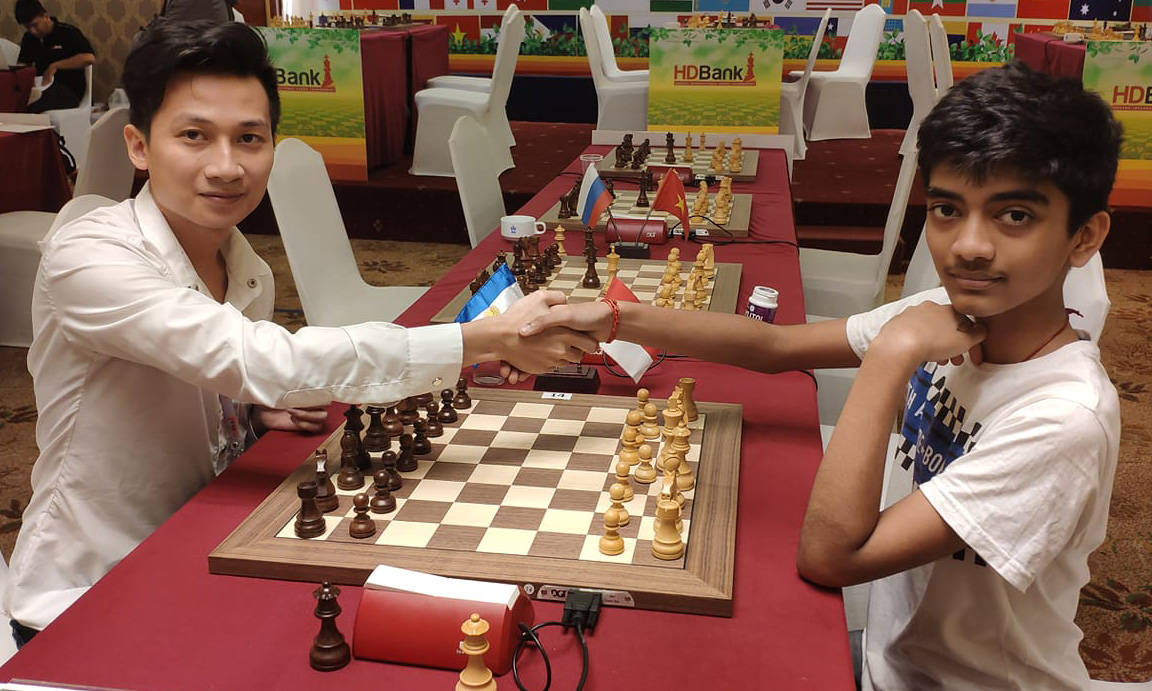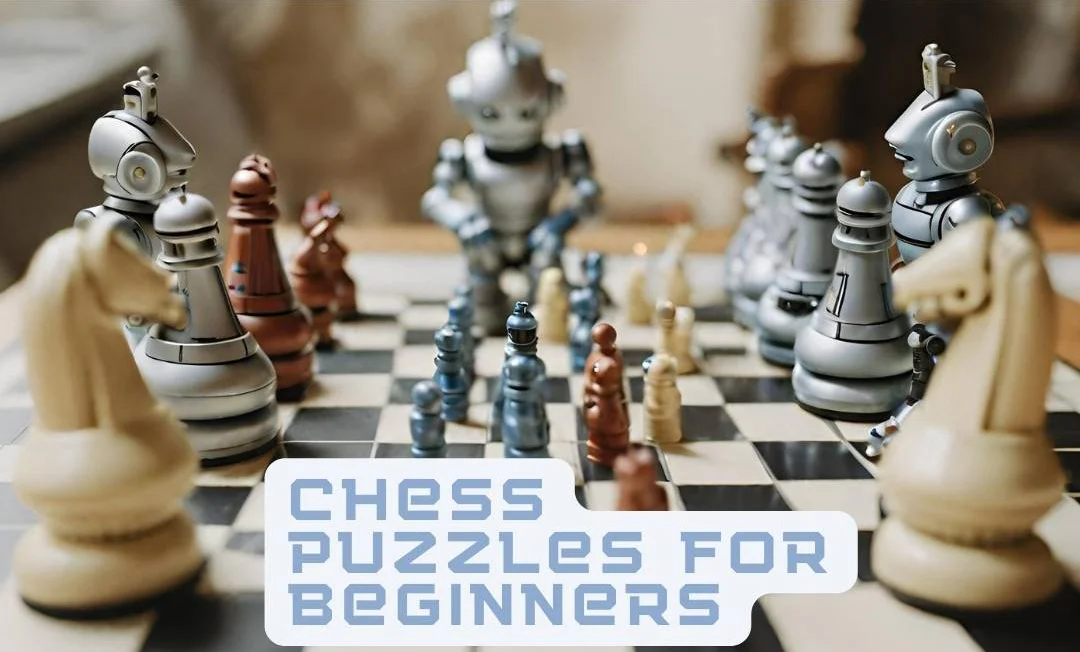Do you want to master the art of solving chess puzzles as a beginner? Rule number one: Always look for a check, or a capture, first. When you get better at puzzles, you will get better at chess.
- Introduction to Chess Puzzles for Beginners
- Understanding Chess Puzzles
- Types and Examples of Chess Puzzles for Beginners
- Tips and Strategies for Solving Chess Puzzles
- Resources for Beginner Chess Puzzles
- Advancing Through Puzzles: Progression and Challenges
- How puzzle-solving skills translate to improved gameplay
Introduction to Chess Puzzles for Beginners
Chess puzzles are like secret maps that help you understand chess better. If you’re just starting, these puzzles show you important moves and clever tricks. In this chapter, we’ll see why puzzles are so helpful for beginners. They’re like puzzles you solve for fun, but they teach you a lot about chess. We’ll explore how these puzzles make your brain stronger and help you become really good at chess. This chapter is like the first step on an exciting journey into the world of chess puzzles. Get ready to have fun and learn a lot about chess.
Understanding Chess Puzzles
Chess puzzles are like little challenges set on a chessboard. They ask you to find the best moves or the clever tricks that can help you win. These puzzles come in different kinds, each testing something special.
For beginners, solving puzzles is like training for a big game. It helps you get better at chess in lots of ways. First off, puzzles make you think better. They teach you to spot tricky moves and plan ahead. When you solve puzzles, you learn how to see what might happen next in a game.
The cool thing about puzzles is that they’re like a treasure chest of chess knowledge. They teach you about checkmates, tactics (like forks and pins), and how to move pieces smartly. As a beginner, puzzles help you understand chess ideas and plans. For example, they show how important it is to control the center of the board and how to set up your pieces for a strong attack.
Solving puzzles also helps you imagine the board better. It’s like playing chess in your head. You start to see moves before they happen. This is called visualization, and it’s super handy in real games.
Types and Examples of Chess Puzzles for Beginners
Chess puzzles serve as invaluable tools for beginners to grasp essential tactics, sharpen their analytical skills, and understand strategic concepts. Here are various puzzle types tailored for novice players, each offering unique benefits in their learning journey.
Mate-in-One Puzzles: Mate-in-one puzzles present scenarios where checkmate can be delivered in a single move. These puzzles emphasize recognizing checkmate patterns and developing a habit of quickly identifying opportunities to end the game. Beginners benefit by understanding basic checkmate positions, aiding in endgame understanding and tactical awareness. There are also mate-in-two, mate-in-three puzzles and so on. Here’s Black to move and checkmate in one move.
Click here to see the move
1…Qf1#. This move places the black queen on f1, delivering a checkmate to the white king, and ending the game.
Tactics Puzzles: Tactics puzzles focus on specific tactical motifs such as forks, pins, skewers, discovered attacks, double check, trapped pieces and more. These puzzles require spotting tactical opportunities to win material, gain position, or deliver checkmate. Beginners learn to recognize and execute tactical maneuvers, enhancing their ability to create threats and exploit opponent weaknesses.
One of the popular tactics is skewer. It’s a clearance tactic where a valuable piece under attack repositions itself, creating an opportunity for a lower-value piece behind it to be captured or attacked. It’s also a contrary maneuver to a pin.
Click here to see the answer
1…Qh1+ 2.Ke2 Qxa1. After the check, Black takes the opportunity to capture White’s undefended rook on a1. This queen check move is called a skewer.
Endgame Puzzles: Endgame puzzles focus on positions typically found in the final stage of the game with fewer pieces. Beginners explore fundamental endgame concepts such as king and pawn endings, opposition, basic checkmate patterns (with king and rook, king and queen, etc.), and pawn promotion. Solving these puzzles aids in understanding endgame principles and improves practical endgame skills. This one below might be a little bit harder.
Click here to see the answer
1…Qd3+ 2. Ke5 {The only move} Qg3 and White loses a Queen.
Opening Principles Puzzles: These puzzles revolve around understanding basic opening principles. They involve recognizing good opening moves, development of pieces, controlling the center, and avoiding common opening pitfalls like premature pawn moves or neglecting piece development. Beginners grasp fundamental opening strategies and principles, setting the groundwork for stronger openings. For instance, castling in the opening ensures king safety. However, in this position, Black didn’t castle, providing White with an opportunity to achieve checkmate in two moves.
Click here to see the answer
- Qd8+ Ne8 {Black cannot capture the Queen as the Bishop on e7 is pinned} 2. Qxe8#.
Mixed Puzzles: Mixed puzzles amalgamate various tactical elements. They often present scenarios involving combinations of tactics, including checks, captures, and threats. These puzzles challenge beginners with a blend of tactical motifs, encouraging a holistic approach to problem-solving and reinforcing multiple tactical concepts in a single puzzle. For example, this move requires employing both discovered checks and piece sacrificed tactics.
Click here to see the answer
1. Bxf7+ Rxf7 18. Qxc7. White initiates a Bishop sacrifice with a check, aiming to secure the opponent’s Queen in exchange.
Tips and Strategies for Solving Chess Puzzles
Mastering chess puzzles involves more than merely finding the correct moves. It requires a systematic approach, sharp observation, and a keen understanding of chess principles. Here are essential tips and strategies tailored for beginners to enhance puzzle-solving skills and amplify chess proficiency.
Prioritize Checks: This isn’t just my advice. As the great Hikaru Nakamura always said: “Always look for a check first”. Start your puzzle-solving journey by looking for moves that put the opponent’s king in check. Checking the king might lead to more opportunities and force your opponent into limited moves. It’s a powerful way to begin solving chess puzzles, often paving the way for strategic advantages.
Understanding Puzzle Objectives: Before diving into a puzzle, grasp its goal. Identify the objective—be it checkmate, winning material, or finding the best move to gain an advantage. Understanding the puzzle’s aim enhances focus and efficiency in finding solutions.
Scan the Board: Take a moment to scan the puzzle board thoroughly. Observe piece placements, potential threats, and patterns. Recognize the interplay between pieces and any vulnerabilities on your opponent’s side.
Start with Simple Puzzles: Begin with puzzles designed for beginners. These often focus on fundamental tactics like forks, pins, or simple checkmates. Gradually progress to more complex puzzles as your skills develop.
Develop a Systematic Approach: Create a systematic process for solving puzzles. Start by assessing checks, captures, and threats. Evaluate forcing moves that alter the opponent’s position, leading to advantageous sequences.
Visualize and Calculate Moves: Train your mind to visualize moves ahead. Practice mentally calculating the consequences of potential moves. This habit helps anticipate your opponent’s responses and enhances calculation skills.
Pattern Recognition: Recognizing recurring tactical patterns is crucial. Identify common tactical motifs like discovered attacks, double attacks, or weak back-rank mates. Spotting these patterns accelerates puzzle-solving speed.
Learn from Mistakes: Treat errors as learning opportunities. Review incorrect attempts, understand why they failed, and discover alternative solutions. Analyzing mistakes fortifies your puzzle-solving arsenal.
Consistency is Key: Commit to regular puzzle practice. Consistency breeds familiarity with various tactical motifs and sharpens your tactical eye. Aim for short, frequent puzzle sessions over sporadic lengthy ones.
Use Puzzle Difficulty Settings: Utilize platforms offering puzzles with adjustable difficulty levels. Gradually increase difficulty as you progress. Challenges encourage growth and prevent stagnation in skill development.
Seek Guidance and Analysis: Engage with chess communities or seek guidance from coaches or experienced players. Discussing puzzles, seeking advice, or analyzing variations with others can illuminate new perspectives and approaches.
In conclusion, chess puzzle-solving is a skill that thrives on practice, strategy, and a willingness to learn from every attempt. Implementing these tips systematically enhances not only puzzle-solving prowess but also overall chess proficiency. Persistence, patience, and an eagerness to improve will undoubtedly yield significant progress in mastering chess puzzles.
Resources for Beginner Chess Puzzles
Chess apps, websites, and software: Explore chess apps like Chess.com, Lichess, or ChessKid offering tailored puzzles for beginners. Websites like ChessTempo and Chesstempo provide puzzle-solving platforms with varying difficulty levels. Chess software such as Fritz and Lucas Chess also offer interactive puzzle features suitable for novices.
Recommended puzzle books: Beginners can benefit from puzzle books like “Winning Chess Puzzles for Kids” by Jeff Coakley, “1001 Winning Chess Sacrifices and Combinations” by Fred Reinfeld, or “Bobby Fischer Teaches Chess” by Bobby Fischer, offering puzzles with clear explanations and diagrams perfect for learning.
Online communities and forums: Engage with chess communities on platforms like Reddit’s r/chess, r/chessbeginners, Chess.com’s forums, or Lichess’s discussion boards. These communities offer puzzle-solving discussions, advice, and guidance from experienced players, fostering a supportive environment for puzzle-solving enthusiasts.
Advancing Through Puzzles: Progression and Challenges
Advancing Puzzle Difficulty: As beginners master the basics, progressing to intermediate puzzles offers new challenges. Gradually shift from simple mate-in-one puzzles to complex tactics and strategy-based puzzles. Platforms often offer difficulty settings or puzzle categories, aiding in smooth progression.
Overcoming Challenges: Intermediate puzzles may pose hurdles like complex positions or multi-move tactics. To conquer these, break down puzzles into smaller parts, focusing on specific elements like piece activity or attacking patterns. Practice regularly and don’t rush; patience helps unravel intricate positions.
Sustaining Motivation: Maintaining enthusiasm during puzzle advancement is key. Set achievable goals, like solving a certain number of puzzles per day. Vary puzzle types to keep it interesting; mix mate-in-twos, tactical, and positional puzzles. Celebrate achievements to stay motivated through your puzzle journey.
How puzzle-solving skills translate to improved gameplay
Solving chess puzzles isn’t just a fun brain exercise; it’s a gateway to better gameplay. Puzzle-solving hones critical thinking, enhances pattern recognition, and improves decision-making abilities. As beginners progress, these skills seamlessly transfer to actual games. They start spotting tactics quicker, foreseeing threats, and planning ahead effectively. Puzzle-solving teaches the importance of controlling the board, seizing opportunities, and avoiding mistakes. Ultimately, the skills acquired through puzzles elevate a player’s overall gameplay, fostering a strategic mindset and empowering them to navigate chess games with confidence and precision.

I’m Xuan Binh, the founder of Attacking Chess, and the Deputy Head of Communications at the Vietnam Chess Federation (VCF). My chess.com and lichess rating is above 2300, in both blitz and bullet.


2 thoughts on “Chess puzzles for beginners: 11 valuable tips and examples”
Comments are closed.